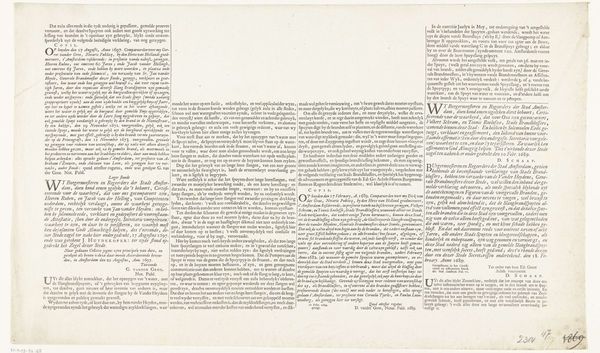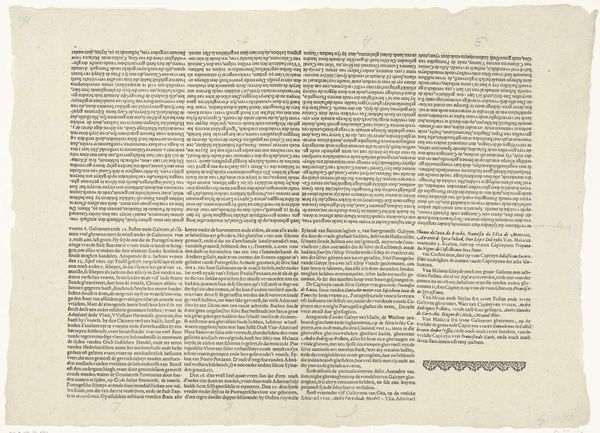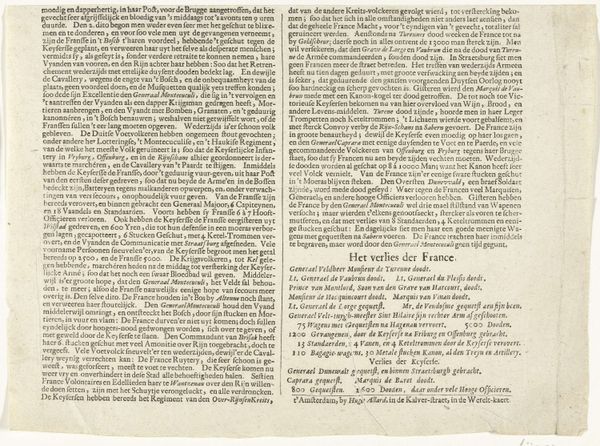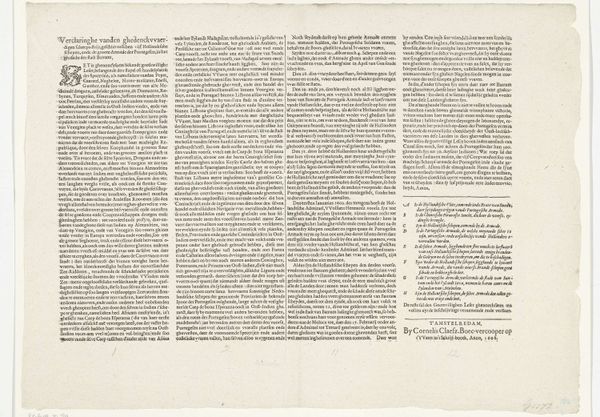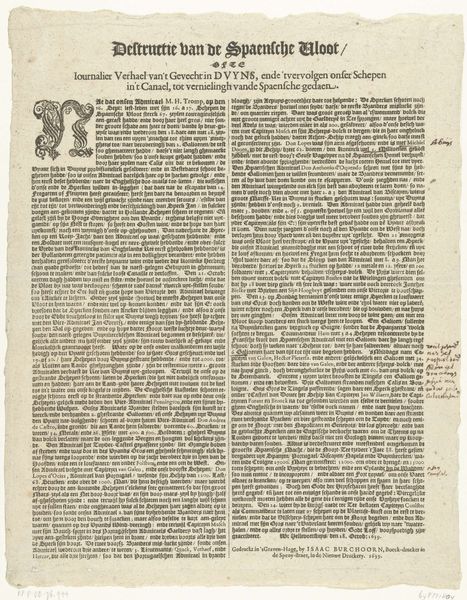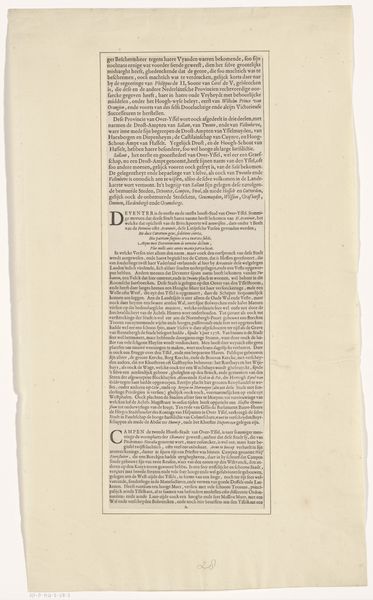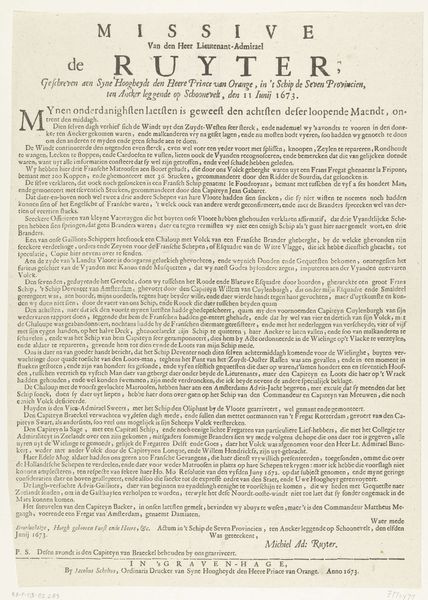
print, textile, paper, typography
#
dutch-golden-age
# print
#
textile
#
paper
#
typography
#
calligraphy
Dimensions: height 365 mm, width 268 mm
Copyright: Rijks Museum: Open Domain
Editor: This is "Missive van Cornelis Evertsen over de zeeslag bij Beachy Head, 1690," created in 1690 by Cornelis Evertsen. It's a print, incorporating typography, calligraphy, and even what looks like textile elements. The overall impression is one of dense detail, a kind of visual information overload. As a student, I find all this historic Dutch fascinating. What do you see in this piece, especially as an iconographer? Curator: Indeed, its density is purposeful, almost overwhelming. Think of this not just as text, but as a potent symbol of authority and control. The Dutch Golden Age was a period obsessed with conveying status through visual cues. What specific symbols catch your eye, beyond the words themselves? Editor: Well, there’s the formal calligraphy, of course, and the almost map-like organization of the names and ships. It feels like an attempt to create order amidst the chaos of battle. Curator: Precisely! Calligraphy becomes more than just beautiful writing; it signifies legitimacy, tradition, and learnedness. The list of ships transforms the chaotic event into a neatly cataloged victory. It suggests an assertion of power through information control, but who is it for? Editor: I suppose for the "Hoog Mogende Heeren"—the High and Mighty Lords—mentioned at the beginning. A report, really? I had expected symbols related to war. Curator: This *is* about symbols of war, just represented in a way befitting the context. Instead of pure military aggression, we get the symbolism of administrative efficiency and a mastery of detail that underscores the success. What does the use of Dutch here, as opposed to Latin perhaps, suggest? Editor: It feels more immediate, more for the people perhaps? Rather than just the elite? Curator: Perhaps a claim of this battle in service to their fellow countrymen. It reminds us that images have long held emotional and political power. I find the focus on naval matters is not solely about victory. Editor: This helps to unpack these past social norms. Thanks! Curator: Agreed. A printed document can also be a cultural artifact which gives insight into values, political concerns, and how a society wishes to see itself!
Comments
No comments
Be the first to comment and join the conversation on the ultimate creative platform.
